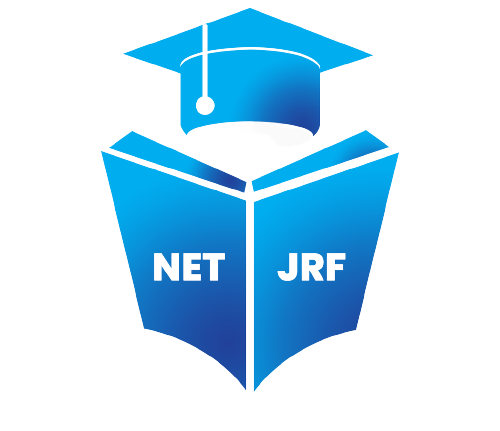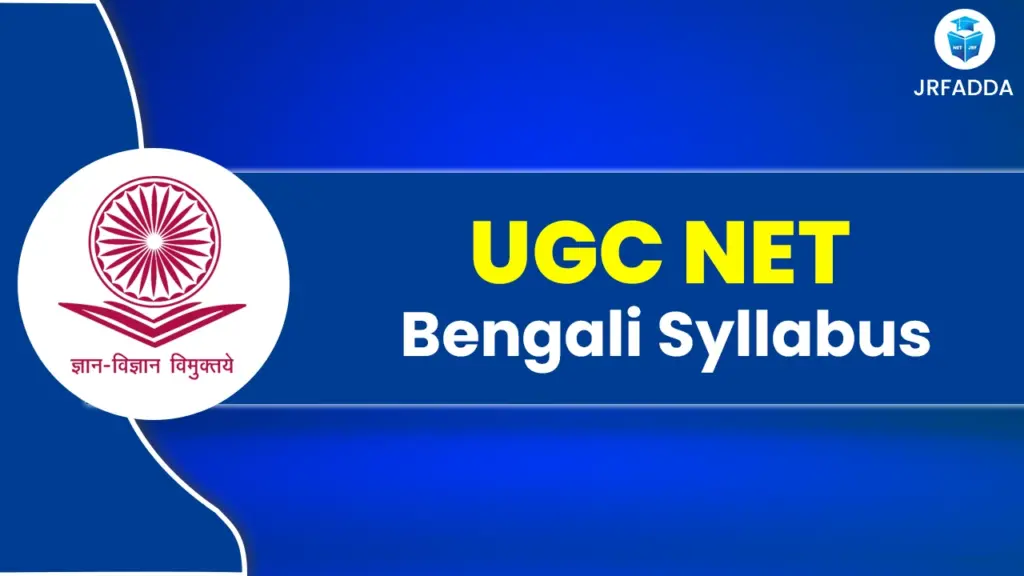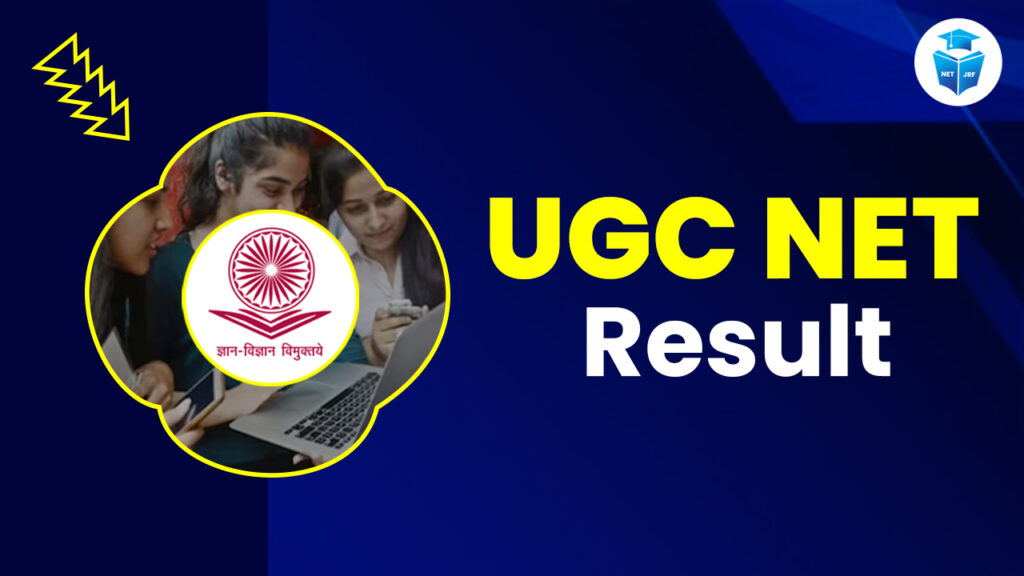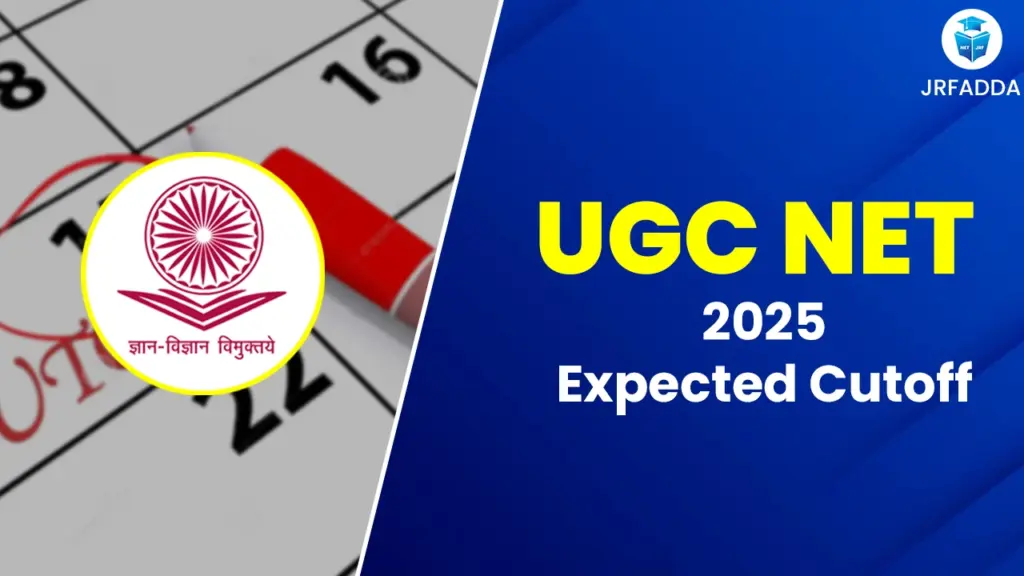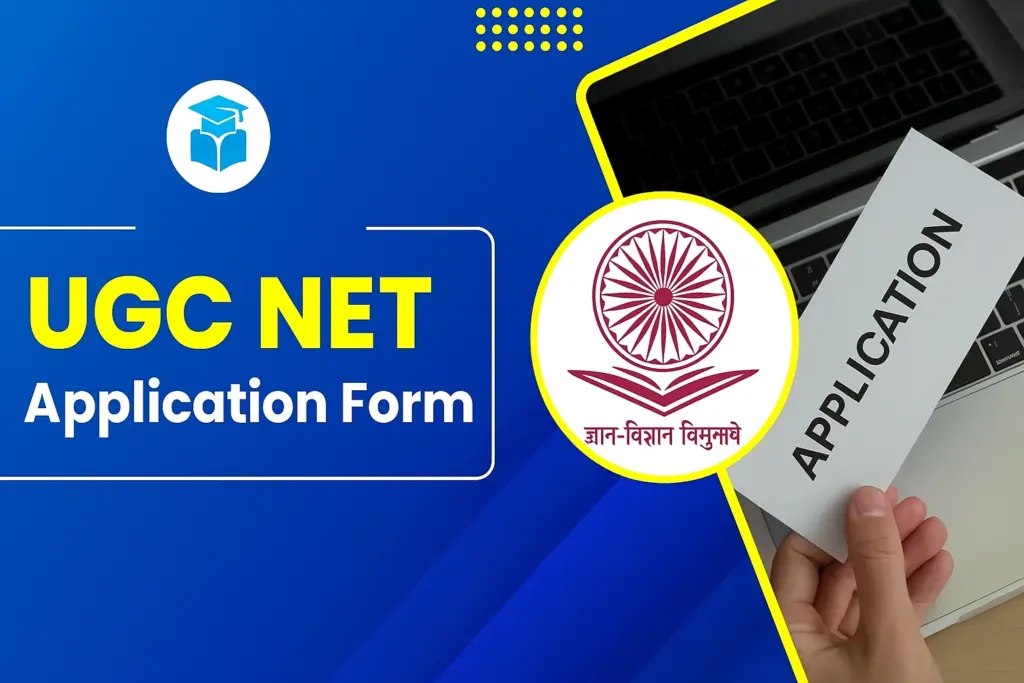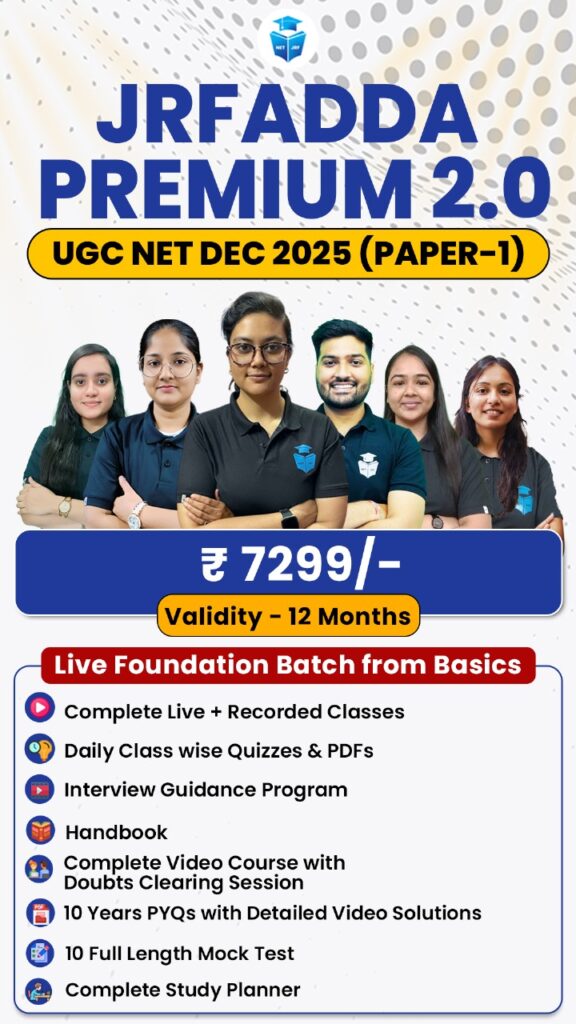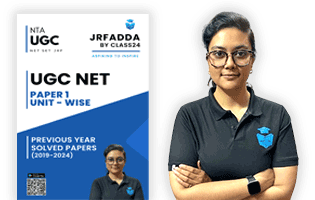The UGC NET Bengali Syllabus 2025, released by the National Testing Agency (NTA), is crucial for candidates preparing for Assistant Professor or Junior Research Fellowship (JRF) roles. The subject code for Bengali is 19. A detailed understanding of the syllabus enables strategic study, covering ten major units including literary history, language structure, prose, poetry, and linguistic analysis.
UGC NET Bengali Syllabus 2025 Overview
The UGC NET exam, conducted by NTA, determines eligibility for Assistant Professor and JRF positions. It is held twice yearly in online mode (CBT) and includes subject-specific content in Bengali.
| Feature | Details |
| Exam Name | UGC NET 2025 |
| Conducting Authority | National Testing Agency (NTA) |
| Purpose | Eligibility for Assistant Professor & JRF |
| Exam Frequency | Twice a year |
| Exam Mode | Computer-Based Test (CBT) |
| Medium of Exam | Bengali |
| Total Duration | 3 Hours (180 Minutes) |
| Papers | Paper I (General) & Paper II (Subject-specific) |
| Subject Code for Bengali | 19 |
| Expected Exam Dates | 21 June to 30 June 2025 (Tentative) |
| Official Website | ugcnet.nta.nic.in |
Also Read: UGC NET June 2025
UGC NET Bengali Syllabus PDF Download
For structured and effective preparation, candidates must refer to the official UGC NET Bengali Syllabus 2025 PDF. It offers unit-wise clarity and helps focus on important themes in Bengali language and literature.
Key Areas Covered in the UGC NET Bengali Syllabus
- Origin and development of the Bengali language
- Premodern Bengali literature
- Poetry
- Design and novel
- Short story
- Drama and farce
- Essays, humor, autobiographies and periodical articles
- Rabindra literature
- Rhythmic ornament
- Indian and Western poetics
UGC NET Bengali Syllabus Download
| Download UGC NET Bengali Syllabus 2025 PDF |
UGC NET Syllabus Paper 1 Unit Wise
Paper 1 is common for all candidates and assesses general aptitude, reasoning, and research skills. Excelling in this section can significantly improve your overall score.
| Unit No. | Topic | Description |
| Unit 1 | Teaching Aptitude | Nature, objectives, characteristics of teaching; learner’s traits; teaching strategies |
| Unit 2 | Research Aptitude | Research types, ethics, methodology, and thesis writing |
| Unit 3 | Comprehension | Reading and interpretation of a passage |
| Unit 4 | Communication | Principles, types, and barriers of effective communication |
| Unit 5 | Mathematical Reasoning and Aptitude | Data interpretation, arithmetic problems |
| Unit 6 | Logical Reasoning | Analogy, deductive and inductive reasoning |
| Unit 7 | Data Interpretation | Graphs, charts, and tables |
| Unit 8 | ICT | Basics, applications in education, digital tools |
| Unit 9 | People, Development, and Environment | Sustainability, climate issues, ecology |
| Unit 10 | Higher Education System | Policies, governance, reforms in education |
Download UGC NET Paper I Syllabus 2025 PDF
| UGC NET Paper I Syllabus 2025 | |
| English | Hindi |
Also Read: UGC NET Syllabus 2025 PDF Download
UGC NET Bengali Syllabus Paper 2 – Unit-Wise Topics
Paper 2 is entirely subject-focused. In Bengali, this paper includes literary history, prose and poetry analysis, grammar, and linguistics.
UGC NET Bengali Syllabus 2025 Unit Wise
| Unit No. | Unit Title | Topics Covered |
| Unit 1 | Origin and Development of the Bengali Language | – Phonology of the Bengali language
– Classification of vowels and consonants – Structure of the axis – Conclusion |
| Unit 2 | Premodern Bengali Literature | – Charyapad
– Rameshwar Bhattacharya – Shivayan (Agriculture) |
| Unit 3 | Poetry | – Ishwar Chandra Gupta: Tattva, Baradani, Snanyatra, Paatha, Topse Fish, Pineapple, Pitha Puli
– Madhusudan Dutta: Meghnabathakavya – Biharilal: The Seat of the Saint – Samar Sen: Meghdoot, Mahua’s Land, An Unemployed Lover, Urvashi, Mukti |
| Unit 4 | Design and Novels | – Bankim Chandra Chatterjee: Poisonous Tree
– Tarashankar Banerjee: Radha – Bibhutibhushan Banerjee: Pather Panchali |
| Unit 5 | Short Stories | – Sripati Samanta Hridayeshwar Mukhujje: Wildflower
– Premendra Mitra: Mosquito (Ghanada), On the Border of the Family |
| Unit 6 | Drama and Comedy | – Madhusudan Dutta: This is What Civilization is All About
– Mir Mosharraf Hossain: Zamindardarpan |
| Unit 7 | Essays, Humor, Autobiographies, Magazine Articles | – Rammohan Roy: A Message from the Promoter and Defender of Euthanasia
– Swami Vivekananda: East and West |
| Unit 8 | Rabindra Literature | – Chitra Kavya
– Poem Again |
| Unit 9 | Rhythmic Figures of Speech | – Origin and development of Bengali rhythm
– Richness and variety of Bengali rhythms |
| Unit 10 | Indian and Western Poetics | – Concepts: Rhetoricism, Ritualism, Humorism, Phonetics, Pictorialism, Exegesis
– Aristotle: Poetics |
UGC NET বাংলা সিলেবাস ২০২৫ – ইউনিটভিত্তিক বিষয়সমূহ
| ইউনিট নং | ইউনিট শিরোনাম | আলোচিত বিষয় |
| ইউনিট ১ | বাংলা ভাষার উৎপত্তি ও বিকাশ | – বাংলা ভাষার ধ্বনিতত্ত্ব
– স্বরধ্বনি ও ব্যঞ্জনধ্বনির শ্রেণিবিন্যাস – বাক্যের গঠন – উপসংহার |
| ইউনিট ২ | প্রাক-আধুনিক বাংলা সাহিত্য | – চর্যাপদ
– রমেশ্বর ভট্টাচার্য – শিবায়ন (কৃষি বিষয়ক) |
| ইউনিট ৩ | কবিতা | – ঈশ্বরচন্দ্র গুপ্ত: তত্ত্ব, বরদানি, স্নানযাত্রা, পাঠ, টোপসে মাছ, আনারস, পিঠা-পুলি
– মধুসূদন দত্ত: মেঘনাদবধ কাব্য – বিহারীলাল: সন্ন্যাসীর আসন – সমর সেন: মেঘদূত, মহুয়ার দেশ, এক বেকার প্রেমিক, উর্বশী, মুক্তি |
| ইউনিট ৪ | উপন্যাস ও গদ্যরচনা | – বঙ্কিমচন্দ্র চট্টোপাধ্যায়: বিষবৃক্ষ
– তারাশঙ্কর বন্দ্যোপাধ্যায়: রাধা – বিভূতিভূষণ বন্দ্যোপাধ্যায়: পথের পাঁচালী |
| ইউনিট ৫ | ছোটগল্প | – শ্রীপতি সমন্ত হৃদয়েশ্বর মুখুজ্যে: বনফুল
– প্রেমেন্দ্র মিত্র: মশা (ঘনাদা), পরিবারের সীমানায় |
| ইউনিট ৬ | নাটক ও প্রহসন | – মধুসূদন দত্ত: এটাই সভ্যতা
– মীর মশাররফ হোসেন: জমিদার দর্পণ |
| ইউনিট ৭ | প্রবন্ধ, হাস্যরস, আত্মজীবনী, সাময়িকী | – রাজা রামমোহন রায়: স্বেচ্ছামৃত্যুর প্রবক্তা ও রক্ষকের বার্তা
– স্বামী বিবেকানন্দ: পূর্ব ও পশ্চিম |
| ইউনিট ৮ | রবীন্দ্রসাহিত্য | – চিত্রকাব্য
– আবার কবিতা |
| ইউনিট ৯ | ছন্দ ও অলংকার | – বাংলা ছন্দের উৎপত্তি ও বিকাশ
– বাংলা ছন্দের ঐশ্বর্য ও বৈচিত্র্য |
| ইউনিট ১০ | ভারতীয় ও পাশ্চাত্য কাব্যতত্ত্ব | – তত্ত্ব: অলঙ্কারবাদ, আচারবাদ, হাস্যবাদ, ধ্বনিতত্ত্ব, চিত্রবাদ, ব্যাখ্যাতত্ত্ব
– এরিস্টটল: পোয়েটিক্স |
UGC NET Bengali Exam Pattern 2025
The exam includes two papers, conducted back-to-back in a single session. Both are compulsory and objective in nature.
| Papers | No. of Questions | Marks | Type of Questions | Duration |
| Paper 1 | 50 | 100 | General Aptitude | 3 hours |
| Paper 2 | 100 | 200 | Bengali Subject-specific | 3 hours |
Also Read: UGC NET Exam Pattern 2025
Tips to Crack UGC NET Bengali Exam 2025
Follow these practical tips to excel in the UGC NET Bengali Syllabus 2025:
- Start Early: Begin preparing during your post-graduate studies.
- Use University Curricula: Refer to central university Bengali syllabi for overlap.
- Time Management: Plan daily schedules covering theory, practice, and revision.
- Previous Papers: Solve past years’ questions for familiarity with patterns
- Mock Tests: Simulate real exam scenarios to boost confidence.
- Conceptual Clarity: Focus on understanding over rote learning.
- Breaks & Balance: Short breaks between study sessions aid long-term retention.
Conclusion
The UGC NET Bengali Syllabus 2025 provides a solid academic framework for those pursuing a career in academia or research. From classical Bengali poetry to modern prose, and from grammar to linguistics, the syllabus is crafted to ensure both depth and breadth of knowledge. Download the official PDF, cover each unit systematically, and practice mock exams regularly for best results.
UGC NET Bengali Syllabus 2025 FAQs
What topics are included in the UGC NET Bengali Paper 2 syllabus?
Paper 2 includes units on Bengali language history, literary movements, criticism, grammar, poetry, fiction, drama, essays, and autobiographical works.
Has the UGC NET Bengali syllabus changed for 2025?
The core syllabus remains the same, but candidates should refer to the latest version released by NTA each year for updates or minor changes.
How many questions are asked in UGC NET Bengali Paper 2?
There are 100 objective-type questions, each carrying 2 marks, focused entirely on the Bengali subject syllabus.
Is both ancient and modern Bengali literature included?
Yes. The syllabus spans from ancient poets to post-independence prose, covering a wide historical spectrum.
What’s the best way to prepare for the Bengali Literature section?
Read original texts, study critical commentaries, practice MCQs, and review literary history using authoritative sources like Sukumar Sen or Ashutosh Bhattacharya.
